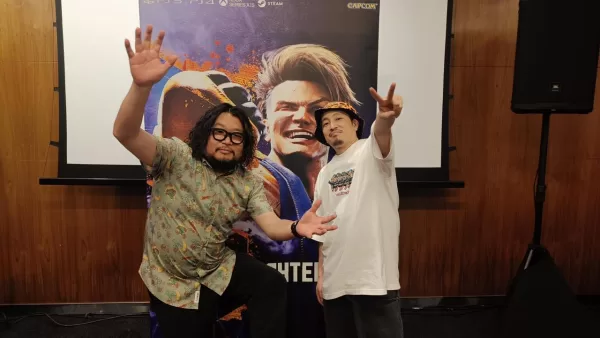Street Fighter 6 game director and producer interview | Innovating on legacy
A conversation on how Street Fighter 6 has been doing and what are the plans moving forward.

With Street Fighter 6 being one of the most successful entries in the series, game director Takayuki Nakayama and producer Shuhei Matsumoto opened up about the creative challenges, the impact of the pro esports scene, and the potential future of Capcom’s classic franchises in an interview during Gamescom Asia.
When asked about the biggest challenge of innovating Street Fighter 6 while respecting its legacy, Nakayama claimed it wasn’t as difficult as it might seem. “It wasn’t necessarily a challenge,” he said. “We focused more on creating a game where players could have fun beyond just the core fighting mechanics.” From the individual character stories to the hub world, social aspects, and minigames, they aimed to deliver a more rounded experience that expanded the depth of engagement for both newcomers and veterans alike. This emphasis on additional experiences on top of the core fighting has received a lot of positive impact from fans.
One of the highlights of Street Fighter 6’s community is its diverse player base, from casuals to professionals. Matsumoto emphasized how the team loves seeing content creators getting involved in fighting game culture. “We saw this rise even during Street Fighter 5,” he said. “Going into Street Fighter 6, we’re glad that growth has continued. Now, we’re seeing pros collaborate with creators, blurring the lines between competitive play and entertainment, which is great for the game.”
The crossover with SNK’s Fatal Fury was a hot topic during the Street Fighter 6 interview. Nakayama and Matsumoto revealed how closely both development teams work together, explaining that Chun-Li and Ken were selected by SNK themselves. “The teams are close,” Nakayama said. “We make sure that these characters stay true to their Street Fighter roots while also giving them something new for Fatal Fury fans to enjoy.”
The collaboration process is all about balance—delivering what fans of both franchises love while creating something fresh. The involvement of the Street Fighter dev team ensures that characters maintain their identity in crossover games while still fitting seamlessly into the new environments.
While the professional esports scene has undeniably shaped how fans engage with Street Fighter 6, Nakayama clarified that it doesn’t directly impact the game’s development. “The esports scene and development timeline are pretty far apart,” he explained. “By the time trends emerge in the community, it’s usually too late for them to influence the actual development.” However, they are constantly checking player feedback on social media to ensure the game is as polished as possible.
When it comes to bringing back characters in each new Street Fighter iteration, Nakayama and Matsumoto revealed that character selection often takes precedence over gameplay mechanics. “Character popularity and their timeline relevance are huge factors,” Nakayama noted. “We want to make sure it makes sense for them to return, not just in terms of the game’s story but also in how fans connect with them.” Of course, gameplay balance is essential, but characters are the heart of the Street Fighter series, and the dev team prioritizes this connection above all else.

One of the unexpected surprises for the team has been the overwhelmingly positive response Street Fighter 6 has received in Japan and Asia. Historically, Street Fighter has had more significant popularity in North America and Europe, but Nakayama and Matsumoto shared their joy at seeing the series grow in their home region. “We’ve received a lot of love from fans in Japan and Asia, which wasn’t as strong in past games,” said Matsumoto. “It’s great to see how much Street Fighter has grown globally with this iteration.”
Capcom has been on a roll with remasters and revivals, and fans are eager for more classic games to return. Matsumoto and Nakayama touched on the team’s passion for fighting games and Capcom’s back catalog. “We love all the past games, and we’d love to bring them all back if possible,” they said. However, he also acknowledged the challenges, including hardware limitations and legal hurdles. That said, the team is actively working on making more of Capcom’s classic titles playable on modern platforms.

